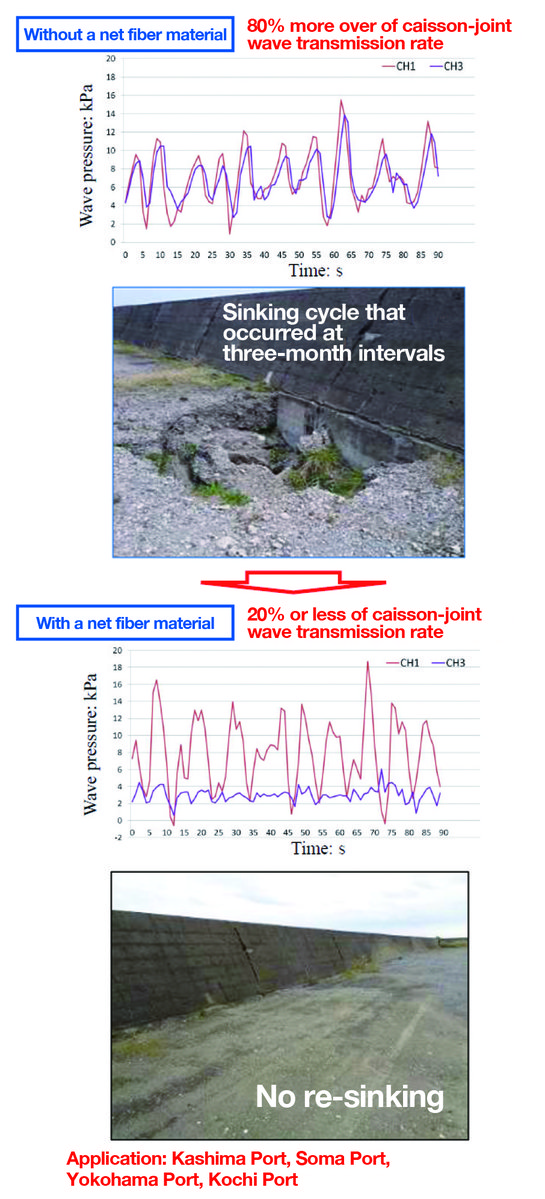Major Research 1A Research on Mitigation of and Restoration from Earthquake Disasters
Background and Objectives
In the event of large-scale disasters such as Nankai Trough mega earthquake and earthquake directly under Tokyo Metropolitan area, it is required to secure necessary trunk line cargo transportation soon after an earthquake and to quickly secure the requisite minimum transportation of key emergency supplies for recovery and reconstruction. In addition, the interaction of earthquakes, tsunamis, and high waves with the ground might cause coastal disasters, so it is necessary to reduce such risks. Therefore, this research aims to establish techniques for predicting seismic motions and damage to structures caused by the strongest, long-duration earthquakes. Furthermore, the research will develop new techniques for reinforcing existing structures for improving their anti-seismic capacity, assessing damage during on-site damage surveys, and implementing emergency measures. In addition, the research elucidates the phenomenon of tsunami caused by submarine landslides, soil performance against the effects of tsunami, high waves, and flows, and method of countermeasures.
Research Topics
Research and development on earthquake disaster mitigation and recovery will be conducted under the following three sub-themes;
1. Research on strong ground motions and damage predictions in the case of the greatest earthquakes
We will develop a composite source model for simulating epicenter strong ground motions that can consider not only the strong ground motions that are caused by the rupture of deep asperities, which have conventionally been reflected in structural designs, but also the effects of shallow slip as observed during the Kumamoto earthquake, and will examine its validity.
2. Research on damage-reduction techniques against the greatest earthquakes
We will develop techniques that will exhibit in the early period the functions of coastal facilities following earthquakes that involve adding new components to existing facilities and replacing components when damaged by earthquakes.
3. Research on the interaction of earthquakes, tsunamis, and high waves with ground dynamics
We will develop effective design and countermeasure technologies to deter sucking out, caving, etc. that occur to coastal structures under various dynamic external forces.
Activities in FY 2021
Research on strong ground motions and damage predictions in the case of the greatest earthquakes
In order to predict waveform and damage in the largest earthquakes, we observed strong ground motions in ports and airports and organized and analyzed their data, investigated earthquake disasters and their causal factors, and worked on the development of novel methods for predicting near-source strong ground motions and liquefaction-induced ground subsidence and flow.As for the development of a method for predicting near-source strong ground motions, we have made progress in developing and examining a source model that is capable of considering not only strong seismic motions that are caused by the rupture of deep asperities on the faults but also the effects of faults shallow slip. Concerning our activity on a system that enables swift and proper determination of the availability judgement of mooring facilities following earthquakes in an effort to improve surveys of earthquake damage and its causal factors, our team has been discussing with the MLIT and its Regional Development Bureaus how to utilize the system and also conducted experiments to test the system on site.
Research on damage-reduction techniques against the graestest earthquakes
Concerning our activity involving damage-reduction technology against the largest earthquakes, we examined ways to predict the deformation that may occur in coastal facilities due to seismic motions and proceeded with developing a technology to allow coastal facilities to exhibit their performance at an early stage.
Research on the interaction of earthquakes, tsunamis, and high waves with ground dynamics
Concerning the interaction of earthquakes, tsunamis, and high waves with ground dynamics, our team proceeded with activities to develop techniques for evaluating the stability of coastal structures against sucking out, sinking, and other adverse phenomena, thus leading to effective countermeasures, and also to develop methods for evaluating the deformation and failure characteristics of coastal geotechnical structures in relation to waves and flows, and for reinforcing the structures against them. In terms of effective novel countermeasures to better protect against sucking out and sinking, the team proceeded working on sucking out prevention method involving filter layers and caisson joint transmission wave reduction method that were proposed in the previous year, by considering a wider range of soil conditions, external forces, and structural conditions and examining the applicability to various conditions. In FY 2021, the filter-layer-based sucking out prevention method was implemented on the seawall for protecting the new runway at Naha Airport, while the caisson-joint transmission wave reduction method was implemented at Yokohama Port. In addition, both of these methods were included in the partial revision of the Technical Standards and Commentaries for Ports and Harbors (April 1, 2022).

Reduction of caisson-joint waves and suppression of collapse by a net fiber material



